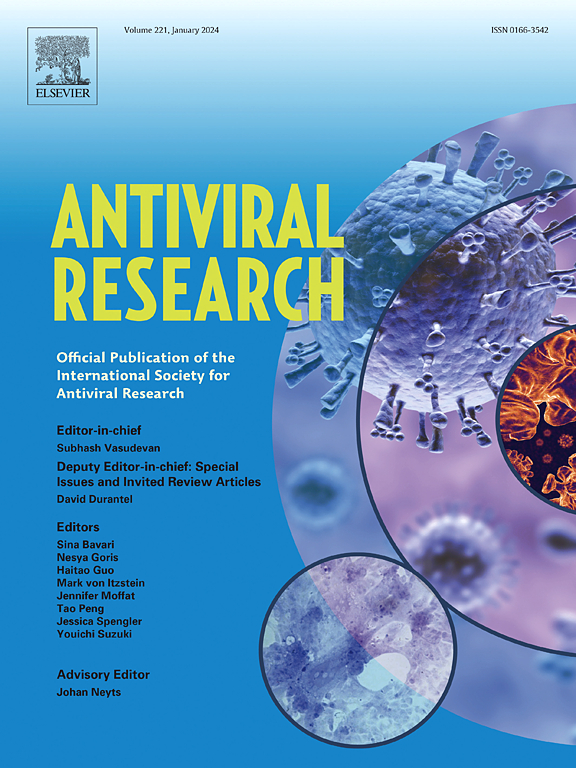Retrospective analysis of steatosis effect on antiviral response and hepatocellular carcinoma risk in chronic hepatitis C
IF 4.5
2区 医学
Q1 PHARMACOLOGY & PHARMACY
引用次数: 0
Abstract
Hepatic steatosis is increasingly the leading cause of liver disease and suboptimal virologic response in chronic hepatitis C virus (CHC) infections worldwide. In Taiwan, the prevalence of cirrhosis and liver disease among CHC patients with steatosis has surged, influenced mainly by Westernized dietary habits. This retrospective study aimed to assess how varying degrees of hepatic steatosis impact the severity of liver fibrosis and hepatocellular carcinoma (HCC) risk in CHC patients undergoing pegylated interferon (Peg-IFN) and ribavirin (RBV) treatment. We analyzed their treatment outcomes, HCC development, and baseline steatosis severity using Brunt's classification after 24 weeks of Peg-IFN/RBV treatment and a 14-year observation (2010–2024). Of 1121 CHC patients, 518 (46 %) had baseline steatosis. Patients with severe steatosis (S2/S3) were older, predominantly diabetic, and had higher fibrosis levels and BMI. Our data revealed that fibrosis was a significant risk factor, especially in mild steatosis cases. Among the cohort, 20 % developed HCC, with its incidence increasing with the degree of steatosis. Steatosis was notably prevalent in mild fibrosis cases. In conclusion, in CHC patients treated with IFN therapy, the steatosis degree directly correlated with fibrosis severity and HCC development. Notably, baseline steatosis emerged as a risk factor in patients showcasing mild liver fibrosis.

慢性丙型肝炎脂肪变性对抗病毒反应和肝细胞癌风险影响的回顾性分析。
肝脂肪变性日益成为世界范围内慢性丙型肝炎病毒(CHC)感染中肝脏疾病和次优病毒学反应的主要原因。在台湾,CHC合并脂肪变性患者中肝硬化和肝脏疾病的患病率激增,主要受西方化饮食习惯的影响。本回顾性研究旨在评估不同程度的肝脂肪变性对接受聚乙二醇化干扰素(Peg-IFN)和利巴韦林(RBV)治疗的CHC患者肝纤维化严重程度和肝细胞癌(HCC)风险的影响。在接受Peg-IFN/RBV治疗24周和14年观察(2010-2024)后,我们分析了他们的治疗结果、HCC发展情况和基线脂肪变性严重程度。在1121例CHC患者中,518例(46%)有基线脂肪变性。重度脂肪变性(S2/S3)患者年龄较大,主要为糖尿病患者,纤维化水平和BMI较高。我们的数据显示,纤维化是一个重要的危险因素,特别是在轻度脂肪变性病例中。在该队列中,20%的患者发生HCC,其发病率随着脂肪变性程度的增加而增加。脂肪变性在轻度纤维化病例中尤为普遍。综上所述,在接受IFN治疗的CHC患者中,脂肪变性程度与纤维化严重程度和HCC发展直接相关。值得注意的是,基线脂肪变性成为轻度肝纤维化患者的危险因素。
本文章由计算机程序翻译,如有差异,请以英文原文为准。
求助全文
约1分钟内获得全文
求助全文
来源期刊

Antiviral research
医学-病毒学
CiteScore
17.10
自引率
3.90%
发文量
157
审稿时长
34 days
期刊介绍:
Antiviral Research is a journal that focuses on various aspects of controlling viral infections in both humans and animals. It is a platform for publishing research reports, short communications, review articles, and commentaries. The journal covers a wide range of topics including antiviral drugs, antibodies, and host-response modifiers. These topics encompass their synthesis, in vitro and in vivo testing, as well as mechanisms of action. Additionally, the journal also publishes studies on the development of new or improved vaccines against viral infections in humans. It delves into assessing the safety of drugs and vaccines, tracking the evolution of drug or vaccine-resistant viruses, and developing effective countermeasures. Another area of interest includes the identification and validation of new drug targets. The journal further explores laboratory animal models of viral diseases, investigates the pathogenesis of viral diseases, and examines the mechanisms by which viruses avoid host immune responses.
 求助内容:
求助内容: 应助结果提醒方式:
应助结果提醒方式:


